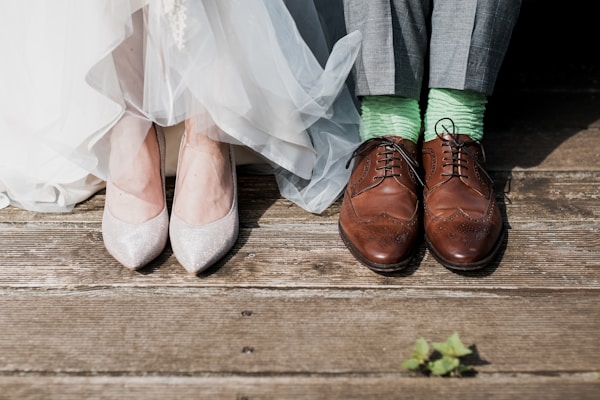What Are the Considerations for Designing a Wedding Dress with a Wrap-Around Detail?
Designing a wedding dress is no small feat, especially when incorporating unique features such as a wrap-around detail. This design element has gained tremendous popularity for its elegant aesthetic and flattering silhouette. However, there are several considerations to keep in mind when integrating this style into a wedding dress. In this article, we will delve into the essential factors, challenges, and inspirations behind designing a wedding dress with a wrap-around detail.
Understanding Wrap-Around Details
Wrap-around details can elevate the wedding dress by adding complexity and uniqueness. A wrap-around design typically involves fabric that wraps around the body, creating a refined and sophisticated look. This design can be versatile and adapted to different silhouettes, making it appealing to various brides.
1. Fabric Selection
The choice of fabric is crucial when designing a wedding dress with a wrap-around detail. Different fabrics will affect how the wrap sits and how it moves. Here are some popular fabric options:
| Fabric Type | Characteristics |
| Satin | Luxurious shine, smooth drape; ideal for formal settings. |
| Tulle | Lightweight and airy; perfect for a dreamy and ethereal look. |
| Chiffon | Soft and flowing; offers a romantic, whimsical feel. |
| Lace | Timeless elegance; adds texture and intricacy to the design. |
When choosing a fabric, consider the wedding venue and season. Lighter fabrics work well for summer weddings, while heavier fabrics are suited for colder months.
2. Body Shape Considerations
The wrap-around detail can be flattering for various body shapes. Understanding how different styles enhance specific silhouettes is fundamental. Here are tips for each body type:
For Pear-Shaped Brides
A wrap-around detail can accentuate the waist while providing coverage for the hips. Using a softer, flowing fabric can create balance and highlight the bride’s curves.
For Hourglass Figures
The wrap design highlights the natural curves of an hourglass figure. Evidently, a fitted bodice with a wrap-around skirt can enhance this body shape, making the most of the bride’s proportions.
For Athletic Builds
A wrap-around detail can create the illusion of curves where there may be less definition. Ruching at the waist can add dimension, making it a flattering choice.
3. The Importance of Fit
Regardless of design, a proper fit is essential for any wedding dress. With wrap-around details, achieving the right fit can be challenging yet rewarding. Here are some fitting considerations:
- Tailoring: Personalized tailoring is critical. A professional can help adjust the dress to ensure that the wrap sits exactly where it needs to.
- Adjustable Features: Consider designing a dress with adjustable wrap dimensions to accommodate different body shapes effectively. This can be helpful for brides during fittings.
- Support: Ensure the dress provides support for the bust, especially if the dress has a plunging neckline. Incorporating boning or a structured bodice can help with this.
4. Designing for Different Wedding Themes
The wedding theme often dictates the overall style of the dress. A wrap-around detail can fit into various settings, from formal to bohemian. Here's how to adapt the design:
Traditional Weddings
For a Classic Wedding, consider rich fabrics like satin or lace. A floor-length wrap dress with intricate detailing can complement a traditional church setting.
Beach Weddings
For a beach setting, opt for light, airy fabrics such as chiffon. A shorter or tea-length dress with a wrap-around detail can create a breezy, comfortable look.
Bohemian weddings
Incorporate natural elements such as floral appliqués or earthy tones. A flowing wrap dress with adjustable ties can resonate beautifully in a rustic or garden environment.
5. Accessorizing the Dress
Accessories play a vital role in completing the wedding dress look. Here are some suggestions:
- Belts or Sashes: These can enhance the wrap-around effect and add a pop of color.
- Jewelry: Choose jewelry that complements the neckline and highlight the shoulders.
- Veils: Depending on the style, a light veil can add sophistication without overpowering the wrap detail.
- Shoes: Consider the venue when selecting shoes. Flat sandals may suit a beach wedding, while heels may elevate a formal affair.
6. Trends in Wedding Dress Designs
The bridal fashion industry is constantly evolving. Currently, some trends that meld beautifully with wrap-around designs include:
- Mixed Fabrics: Combining textures like lace over tulle can create depth and interest.
- Bold Colors: While white traditionally reigns, pastel shades and even bold colors are becoming more popular.
- Sustainable Fabrics: Eco-conscious brides are seeking dresses made from sustainable materials, making it essential to consider eco-friendly fabric options.
Conclusion
Designing a wedding dress with a wrap-around detail can be a beautiful endeavor, enhancing a bride's figure while reflecting her personal style. By understanding the fabric choices, body shape considerations, fit requirements, and the significance of accessories, designers can create stunning dresses that resonate with the bride's vision. Additionally, keeping trends in mind ensures that the design remains contemporary and fresh.
Final Tips
Before jumping into the design process, take some time to research and draw inspiration from various styles. Remember to involve the bride in the design journey to ensure that her voice and preferences are heard. The resulting design should celebrate her uniqueness, providing her with a memorable gown on her special day.
